Monster Mash
Ducati Monster celebrates its 25th birthday
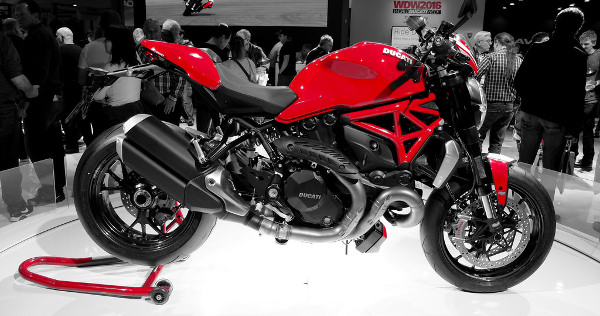
M1200R
Happy birthday to the Ducati Monster, 25 years and still going strong.
Ducati celebrated its anniversary for the Monster by holding a rally on the Castellet Circuit, in France, on 24th March.
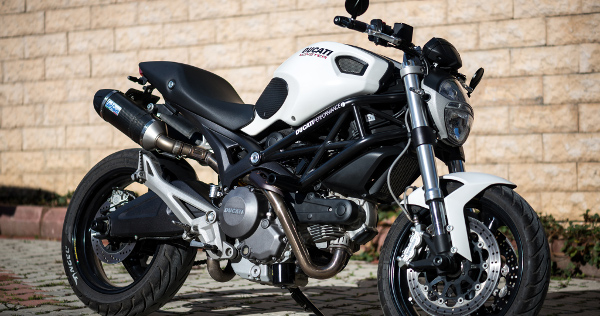
M696
The history of the Monster – Ducati's saving grace
A first of a kind, Ducati's Monster paved the way for a craze in 'naked' motorcycles. One replicated by many leading motorcycle manufacturers over the years. It's a favourite with many celebrities: Lewis Hamilton, Orlando Bloom, Usher, and Alanis Morissette, to name but a few. Between the years of 1993 and 2000, the Monster accounted for 42% of Ducati's sales. With over 300,000 of them sold since its release, it has saved the brand from financial difficulty and the possible collapse it faced in the 90s. Not bad for a bike built as a "parts bin special".

S4RS
The Ducati Monster was designed by Miguel Angel Galluzzi, under instructions from the then Ducati manager Massimo Bordi to create something cheap, simple and not too sporty. Galluzzi was not able to use new components, so he set to work mixing and matching parts from existing models. The result was different from anything anyone had previously seen. The bike was "naked", with its engine and frame exposed. Ducati bosses apparently responded to the reveal by asking 'are you bringing the rest of the bike later on?' But Bordi loved it, remarking that it looked like the sort of bike Marlon Brando would ride in a modern-day version of The Wild One.
The bike was revealed at the 1992 Cologne Motorcycle Show and caused a lot of hype. It was given the name Monster, 'Il Mostro' in Italian. A nickname of tiny monster figures that were popular with Italian children.

M900
Galluzzi, famously stated, 'all a bike needs is a saddle, engine, two wheels, handlebars and a tank to fill with fuel'. The Monster was both minimalistic and muscular-looking and the finished product was agile. An 888 sportsbike chassis was added for easy handling, a 904cc air-cooled SOHC engine from Ducati's 900SS, and was lightweight, at 185kg. It would be a premium product, with inverted forks and Brembo brakes. The company was struggling to find the money needed to pay suppliers, which could have meant the bike almost wouldn't make it to the production stage. Luckily, it did.
It was an instant hit - with those who could afford it. £7,500 was a hefty price for some. Ducati responded by releasing a smaller capacity Monster with a lower chassis specification two years later. The M600, which came on the market at £5,000. The model was so successful that Monster sales in 2005 accounted for over half of Ducati's worldwide sales.
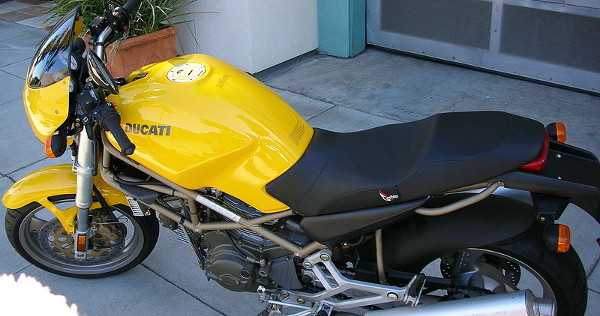
M750
In 1997, Ducati released the M750 Monster. It used a 748cc air-cooled engine, the same front disc as the M6000, and a lower specification than the M900. At £6,8000, it was designed to be a mid-range Monster. It wasn't as popular as the M600 or M900, but would still stay in the company's line-up until 2003.
The Monster's elemental simplicity made it a spectacular hit with custom motorcycle builders. The release of the Dark M600 in 1998 intentionally appealed to those customers. In black matte paint, it made a simple yet efficient platform to customise. On the opposite side of the scale was the 1998-released Cromo M900 model, complete with a shiny chrome tank to add a touch of bling. Ducati's first 'S' Monster also came out that year. It had carbon side-panels and mudguards, a small screen, upgraded full adjustable forks and an upgraded shock.
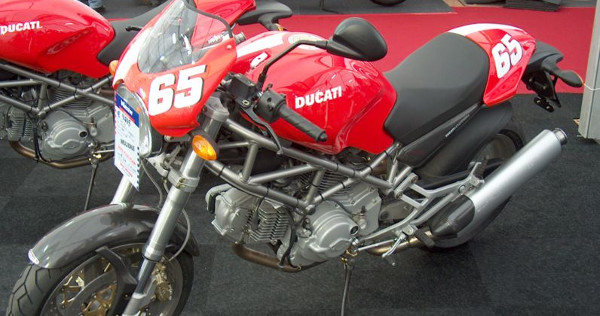
M629IE
The Monster had remained largely unchanged since its 1993 release, but things were about the change. In 2000, Ducati introduced the M900ie – adding fuel-injection and an extra 11bhp to the mix. By 2002, this has rolled out among its entire range, with the M600 being upgraded to an M620ie – a higher capacity fuel-injected bike. That same year, the baby Ducati got its first 'S' model, released as the M620Sie – the bike gaining carbon panels.
Things were getting sportier, too. Ducati introduced a water-cooled Monster, the S4. It was powered by a re-tuned version of Ducati's desmoquattro engine from its 916 sportsbike. It has a single-sided swingarm and stacked pipes. Boasting 101bhp, it was the most powerful Monster to date.
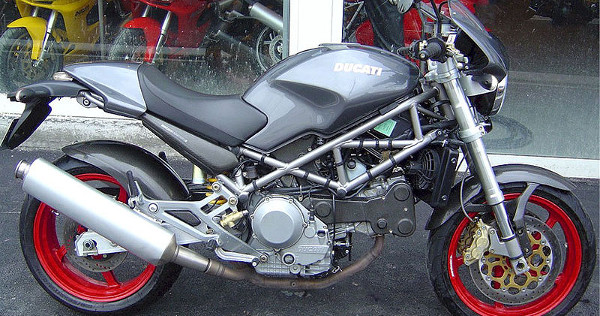
S4
2003 saw the introduction of a 996cc capacity upgrade: the Monster S4R. Its 'S' model was released in 2007. It featured Ohlins suspension, a 998cc testatrette engine and 126bhp. Upgrades were all round in '03. M900 models were replaced by M1000 and M1000S models and the M750ie became the M800.
In 2005, Ducati introduced the S2 range of bikes. They featured the S4's single-sided swingarm and twin stacked pipes but were air cooled as opposed to water cooled. 2007 saw the baby of the Monster family being increased from M620 to M696, with a higher capacity engine. The S2R was also introduced, with a 1000cc engine.

S2R
For 2008, the Ducati revamped the Monster range, giving it a new look. The side-mounted exhausts and long tanks were replaced with twin under-seat pipes and a stubby and squat stance.
In 2009, Ducati brought the M1100 and M1100S to the market. They featured single-sided swingarms, radical brakes and fully digital dashes. This same year, Ducati sold over 12,000 of its 696 models, becoming the first Ducati motorcycle to sell in the 10,000s in a year.
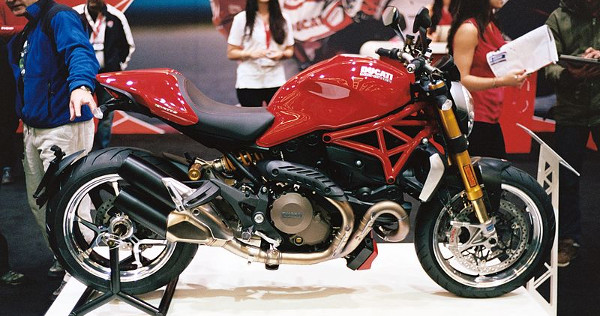
M1200
In 2011, the Monster range got electronic assists for the first time with the arrival of the M1100Evo with ABS, traction control and a wet clutch. In 2013, the 20th anniversary of the bike, Ducati released celebratory models throughout its range. They featured the same gold frame and red paint as the original 1993 M900. At EICMA, the brand introduced its 2014 M1200 and M1200S models, which used a water-cooled four-valve 135/145hp 1198 testastretta 11 engine.
Two years later and the last of the air-cooled models would be gone. The last remaining one, M696, was replaced by the new Monster 821. It was now the smallest capacity Monster in the European market.
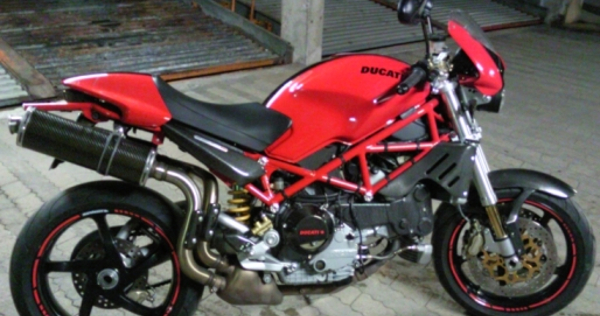
S4R
2016 saw the launch of the most powerful Monster yet: the M1200R. It boasted 158bhp, twice the power of the original air-cooled M900.
Galluzzi has famously been quoted as saying, 'when a design is a good design, it doesn't have time'. The Monster can be considered as one of the most influential motorcycle designs in history. Its popularity over the last 25 years acting as a testament to its designer's words.
Comments:
16/03/18 - Not as good as my Moto morini corsaro !
16/03/18 - Bikes like this in the UK anyway are mainly show pieces now or for track days The great days of fast motorcycling probably died around the mid 1980's with technology taking over from traffic cops to trap us. Now its just piddling along and waiting your chance of a quiet road to open up. Even non standard exhausts are now regarded as unsocial and the bloody electric bike will be with us soon. We are doomed!









